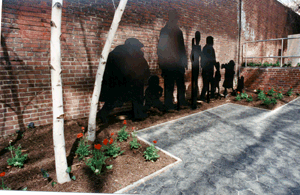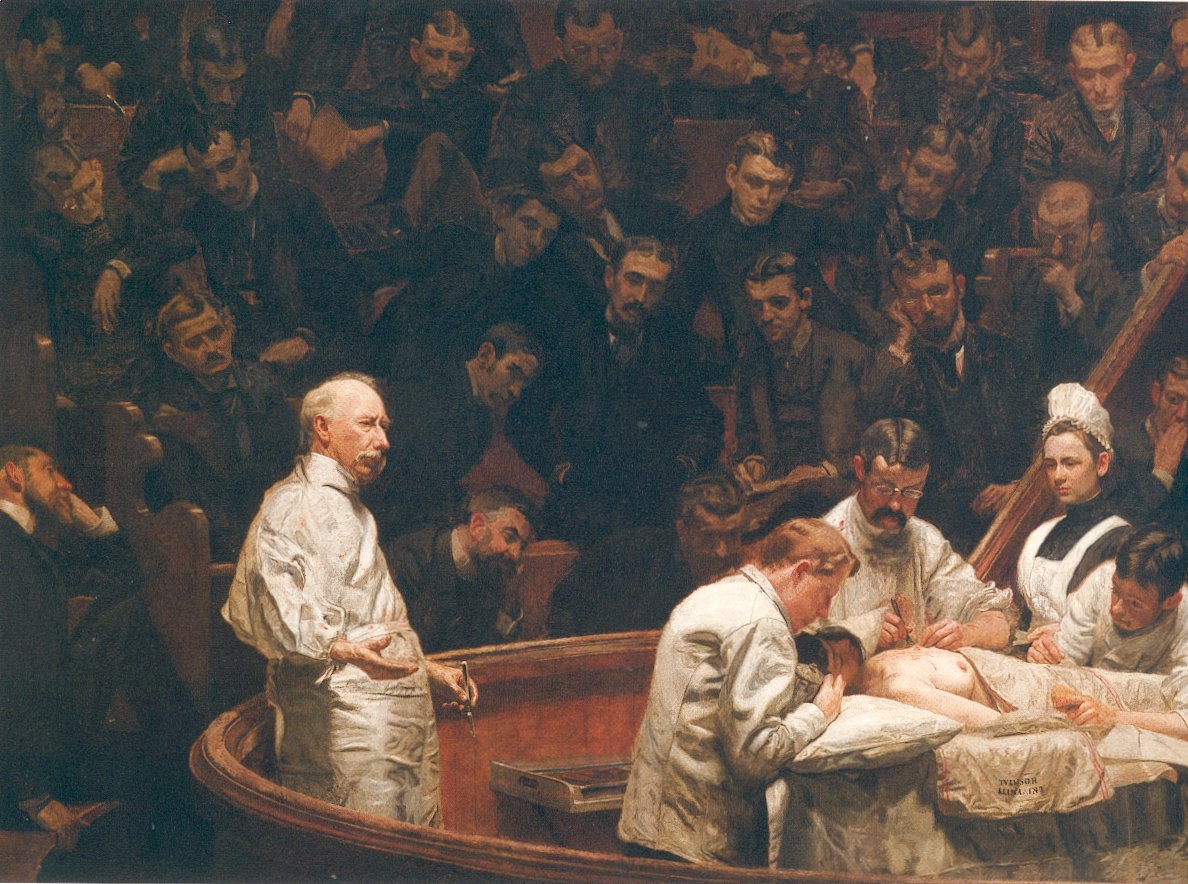One last note: Penn made the mistake of claiming the domain name, upenn.edu, thereby causing a nomenclature debacle. Penn is now often referred to as UPenn (probably due to the choice of URL), frankly a sad state of affairs.
Maybe you're coming to visit Penn. Maybe you're already at Penn. Maybe you're almost graduating and haven't taken the time to learn anything about the place you've been at for years! You could learn all about Penn's history by perusing the university archives. Or, you could join me on a virtual tour of my Penn favorites.
Demystifying Penn Traditions
from a presentation I gave in 2002Founded by Benjamin Franklin, Penn takes its name from William Penn, founder of Philadelphia and Pennsylvania. Penn's coat of arms reflects its founder's and namesake's coat of arms. The animal in the center is a dolphin.
 Penn's seal is the official signature of the University. Thus, you don't really see it on campus, but rather on documents. One place you can see the seal is on south wall of Houston Hall right by the entrance.
Penn's seal is the official signature of the University. Thus, you don't really see it on campus, but rather on documents. One place you can see the seal is on south wall of Houston Hall right by the entrance.Penn's logo like many universities is in Latin. Leges sine moribus vanae has an interesting history. In the late 1800's a student translated the logo then to "loose women without morals" which so distressed the trustees that the logo was eventually changed to the current one. The logo translates to "laws without morals are in vain" which is believed to reflect Horace's statement "
 Soon after the founding of the school, Penn outgrew its buildings in Center City. The story goes that when Ben Franklin was walking on the west side of the Schuylkill River looking for a new place to locate the University, his button popped off! Taking this as a sign, he located the new buildings at this very location.
Soon after the founding of the school, Penn outgrew its buildings in Center City. The story goes that when Ben Franklin was walking on the west side of the Schuylkill River looking for a new place to locate the University, his button popped off! Taking this as a sign, he located the new buildings at this very location. Much later a famous sculptor, Claes Oldenburg, heard the story and envisioned a button popping off the Big Ben statue in front of College Hall, landing and splitting right in front of the Van Pelt Library!
One of many of College Hall's interesting stories is that Charles Addams, the creator of the Addams Family, used the building as a model for the Addams mansion (actually, not true, but I'll leave the details out for right now as the Addams Family Mansion and College Hall are remarkably similar!). His widow donated money to PennDesign for their new building, Addams Hall. In the courtyard, you'll find a tribute to the Addams Family!


 Right near College Hall is Claudia Cohen Hall (nee Logan Hall) named after the former wife of Revlon's Ron Perelman. Cohen / Logan Hall was the second building built on the West Philadelphia campus and housed the medical school.
Right near College Hall is Claudia Cohen Hall (nee Logan Hall) named after the former wife of Revlon's Ron Perelman. Cohen / Logan Hall was the second building built on the West Philadelphia campus and housed the medical school.Logan Hall burned on numerous occasions and during at least one fire, one could see an entire skeleton sailing out of the fourth floor window in a desperate attempt to save it and other medical specimens. Before renovation, Logan housed the famous surgery amphitheater of Thomas Eakin's Gross Clinic and Agnew Clinic.
The first faculty of the medical school were from the University of Edinburgh in Scotland. The first ivy planted at the school was brought over from Scotland. To this day, Penn maintains sister status with the University of Edinburgh and bagpipes blow during every commencement.

 Houston Hall (also part of the Perelman Quadrangle) is the first student union building in America. It has gone through many renovations to accommodate the needs of students. The swimming pool is now the Hall of Flags, showcasing all the flags of the Ivy League schools. See if you can figure out which flag belongs to which school!
Houston Hall (also part of the Perelman Quadrangle) is the first student union building in America. It has gone through many renovations to accommodate the needs of students. The swimming pool is now the Hall of Flags, showcasing all the flags of the Ivy League schools. See if you can figure out which flag belongs to which school!

Some celebrations have stood the test of time. Hey Day signifies the passing of Penn juniors into their last year. Festivities are always marked by the Junior Class march through campus where students wear hats and wave canes in the air. Historically, the hats were made of straw and the canes of mahogany, but today's hat is foam and the cane is bamboo. Tradition demands that juniors take bites of each others' hats.

Ivy Day and Class Day have merged dates with Hey Day but are celebrations for the senior class. Notably, a sprig of Ivy is planted and the graduating class' Ivy Stone is unveiled. Ivy Stones (the oldest example dates from 1873) can be found all over Penn especially on and in buildings. Check out College Hall's outside walls for some really old Ivy Stones!
In the presentation, you get to hear the Penn songs, but unfortunately, there's no way I can currently share them with you -- maybe as mp3 files later. For now you'll have to be satisfied with knowing the major song titles and why they're sung. The Red and the Blue is the school song. It speaks to the story of how Penn got its colors. Apparently, during a track meet at Syracuse University, the coach was asked what Penn's colors were. Since the University didn't have any, the coach boasted to the reporter that Penn would take the colors of the teams they beat: Harvard's crimson and Yale's blue.
Drink a Highball is sung after the third quarter of a football game. Penn students would stand and toast the team by drinking a highball (whiskey and ginger ale). After the legal drinking age was raised to 21, the freshman were not allowed to toast. To ameliorate the issue, students stopped drinking a toast and started throwing actual toast on to the football field! Penn has a specialized refitted Zamboni machine which vacuums up all the toast after it is thrown.
The Field Cry of Penn is sung after the football team scores points. Its verses speak to the Civil War (Jeff Davis is Jefferson Davis, confederate president and McGinty was some Navy dude).
Finally, to end our tour of Penn, I'd like to leave you with some notable alumni. In the arts,
- Marc Platt (producer of Wicked, Silence of the Lambs, & more)
- Lisa Scottoline (lawyer turned novelist)
- Ezra Pound (poet)
- Zane Grey (dentist turned novelist)
- Candace Bergen (actress)
- Hal Prince (producer)
- Louis Kahn (architect)
- John Legend (musician)
- William Henry Harrison (shortest-termed President of the US)
- C. Everett Coop (Surgeon General)
- Ed Rendell (Pennsylvania Governer)
- Arlen Specter (Senator)
- Walter Annenberg (ambassador and philanthropist)
- Ronald Lauder of Estee-Lauder (ambassador)
- Donald Trump and his son
- Ron Perelman, CEO Revlon









1 comment:
that is so cool about the adams family!
Post a Comment